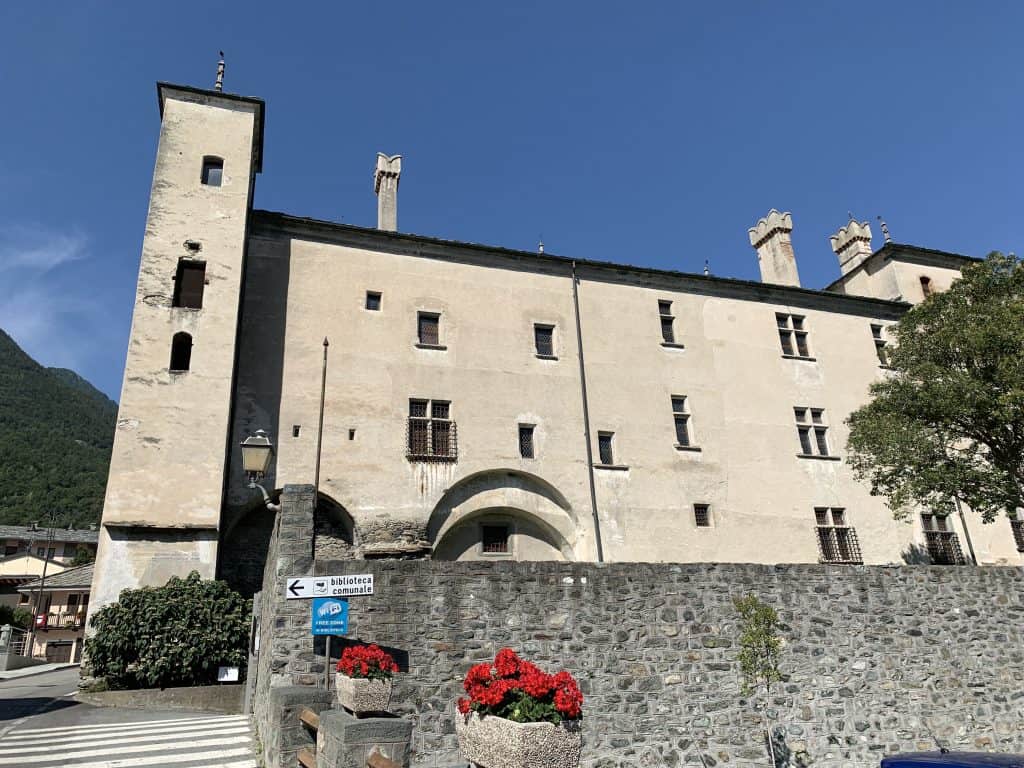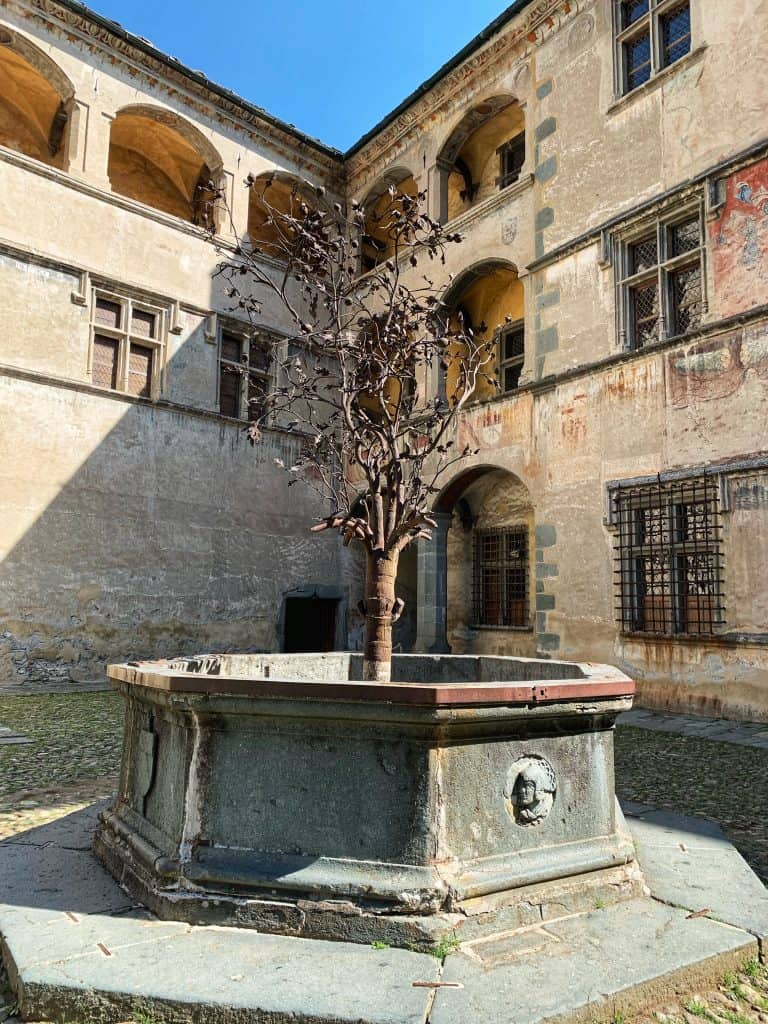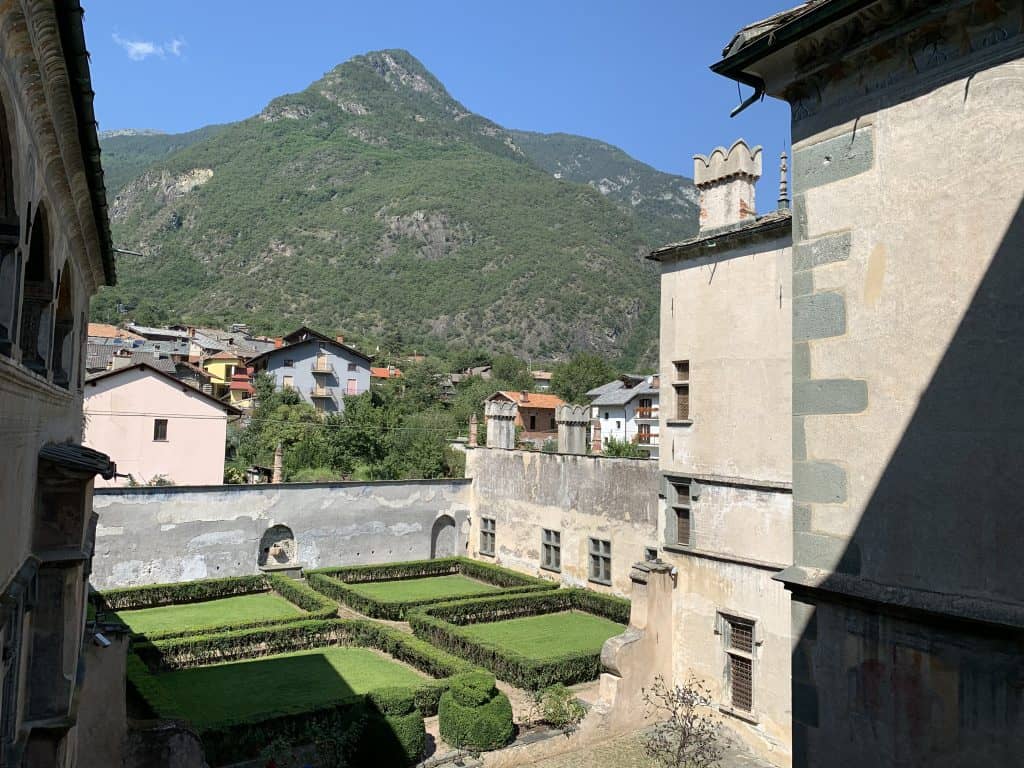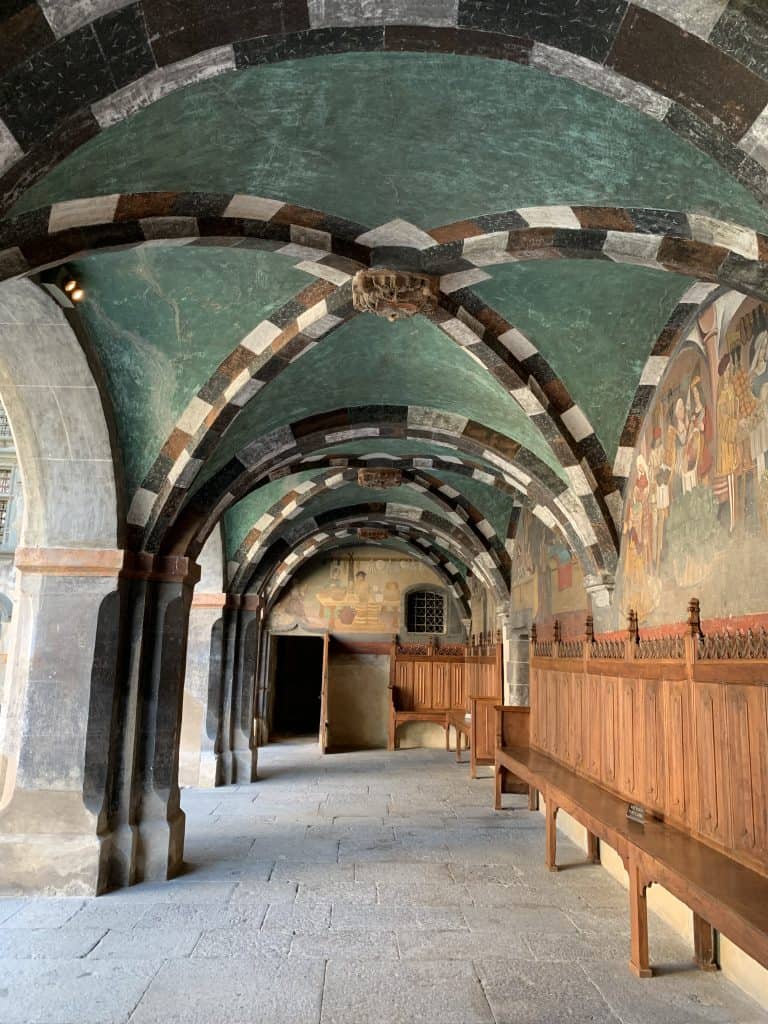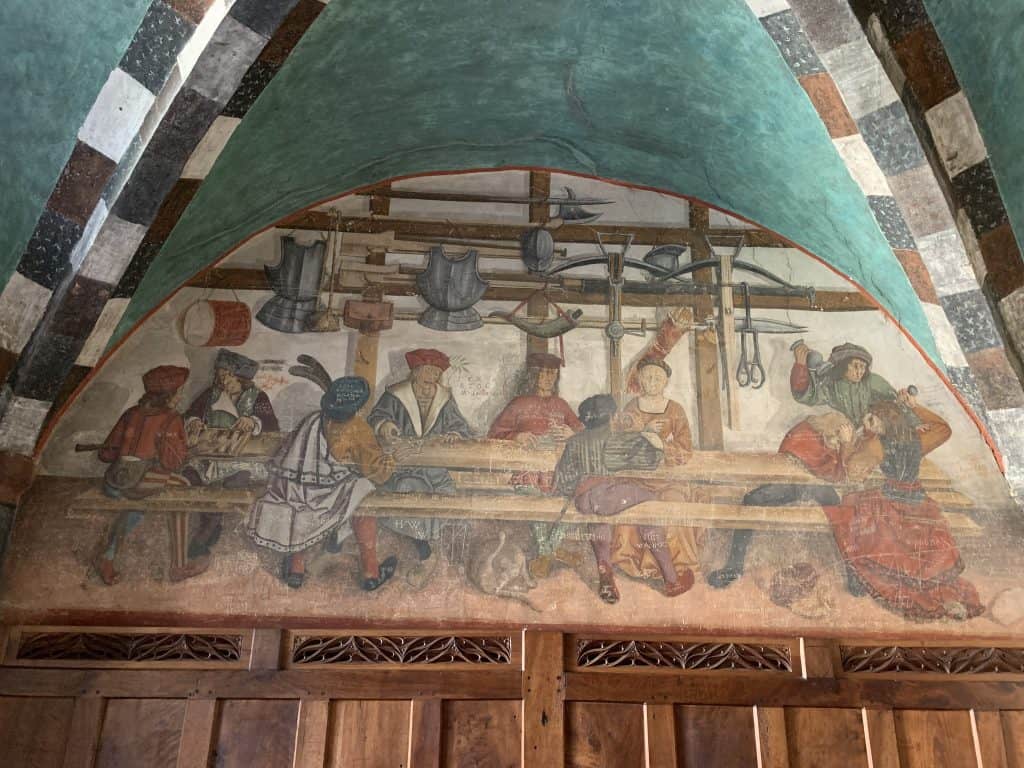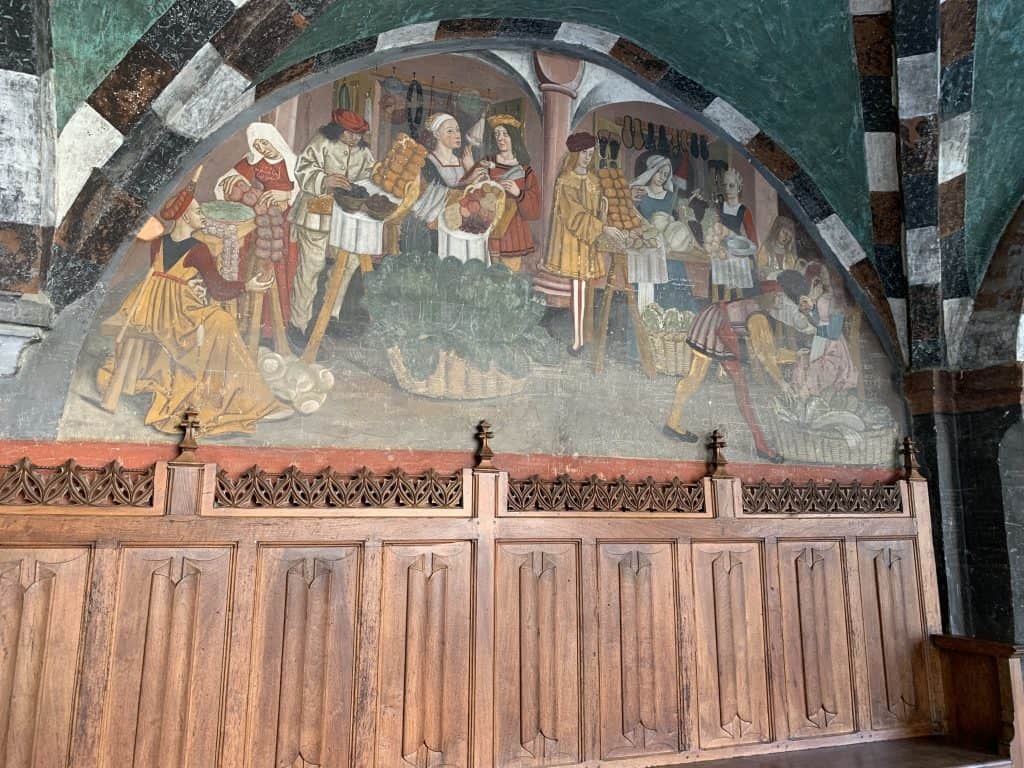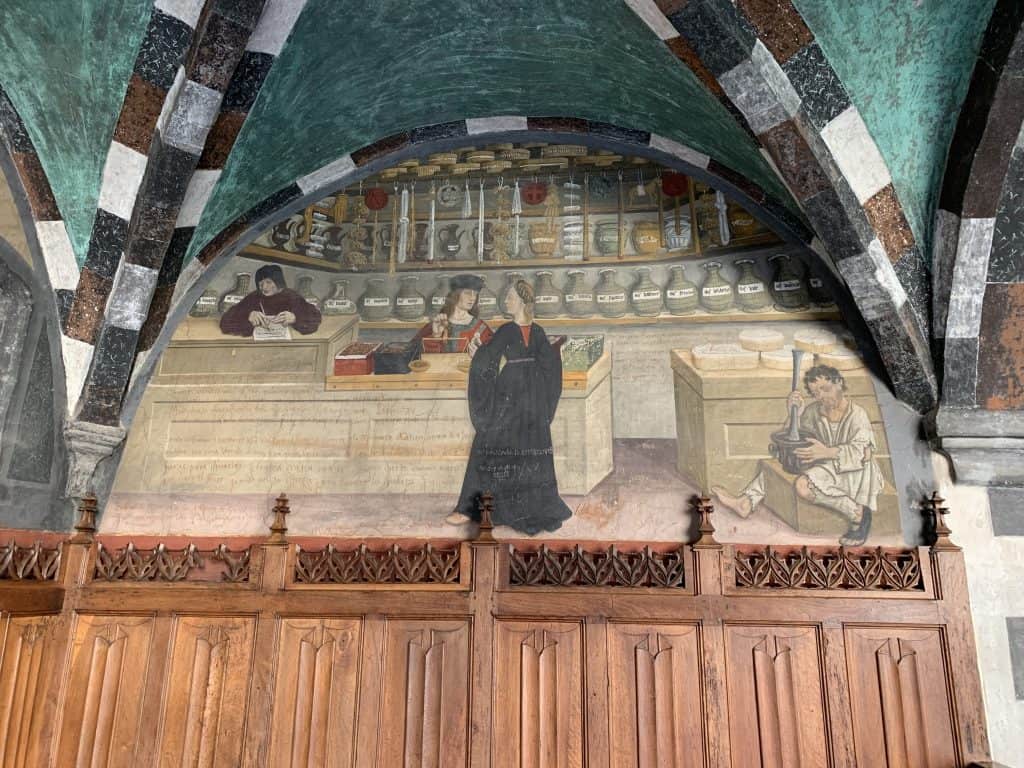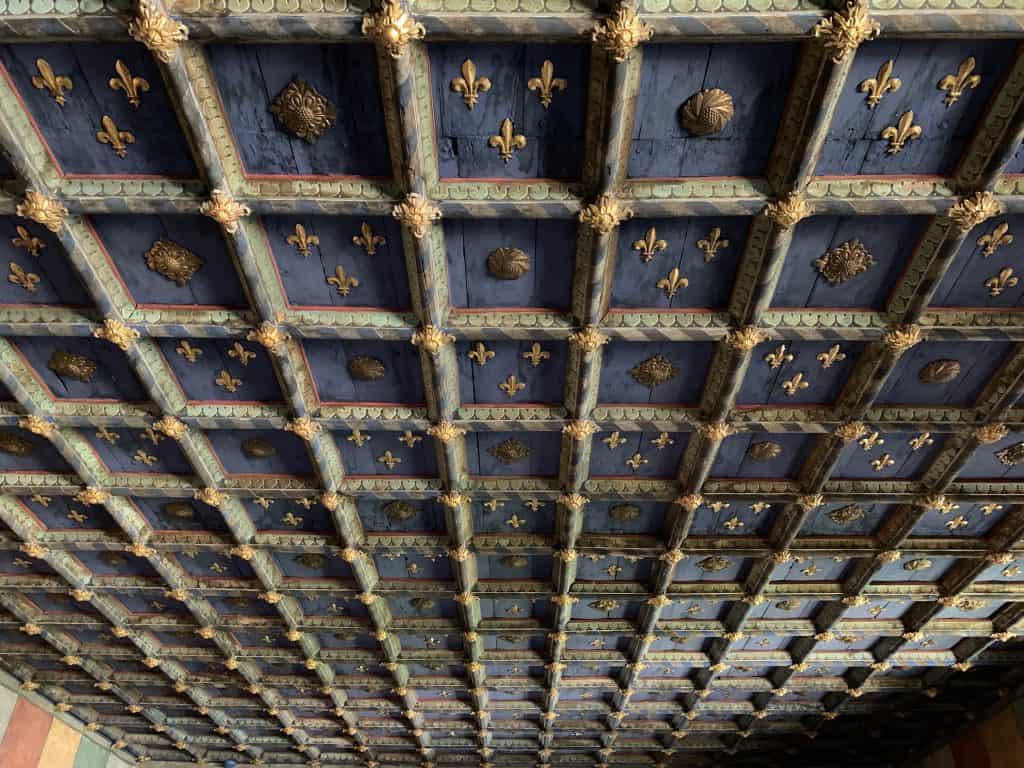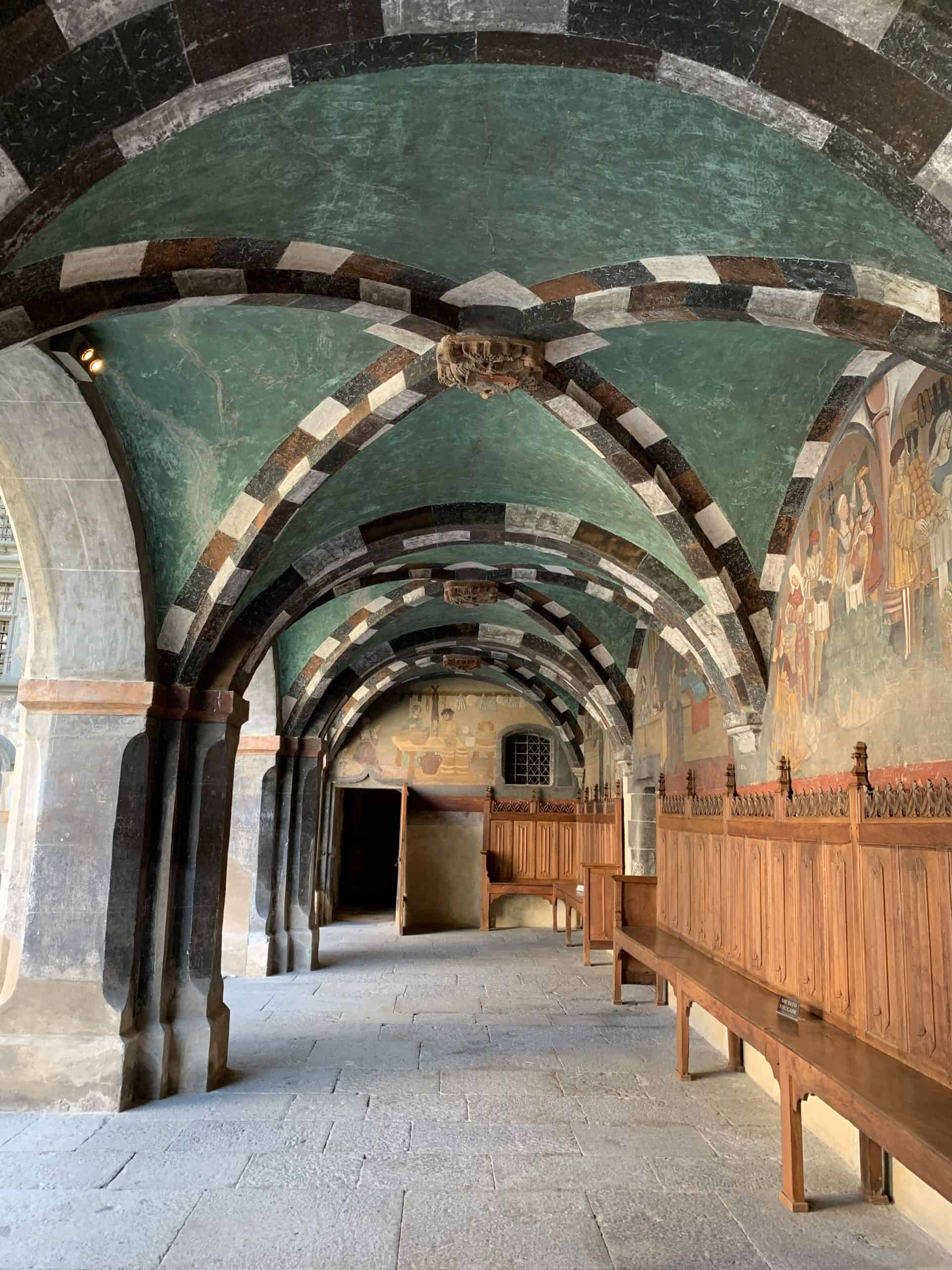
The Castle of Issogne, initially the domain of the bishops of Aosta, later passed into the hands of the Challant family.
Over time the existing buildings were enlarged and united, until the radical transformation took place between about 1490 and 1510 by Giorgio di Challant, prior of Sant’Orso, who made it a sumptuous residence.
It was then that the castle took on its current appearance, becoming a single horseshoe-shaped palace, overlooking a large courtyard and an Italian garden.
At the entrance is the famous wrought iron pomegranate fountain symbol of prosperity.
The courtyard is framed by the elegant lunettes of the portico, frescoed with scenes of everyday life constituting an exceptional testimony of the time.
You can also find inscriptions and graffiti left on the walls by the guests of the castle over the centuries.
On the second floor there is the room called “of the King of France”, with a coffered ceiling decorated with lilies and a fireplace that bears on the hood the shield of the French dynasty of the Valois.
After the glories of the sixteenth century, the residence began to decline and in 1872 it was sold at public auction and purchased by the Turin painter Vittorio Avondo.
Donated to the Italian State in 1907, today the castle belongs to the Autonomous Region of Aosta Valley.

